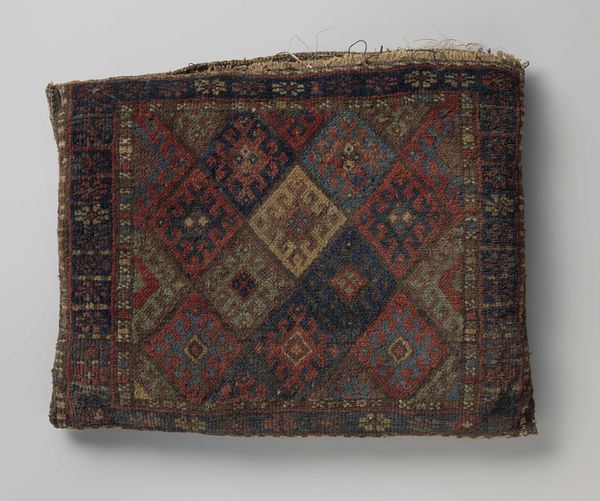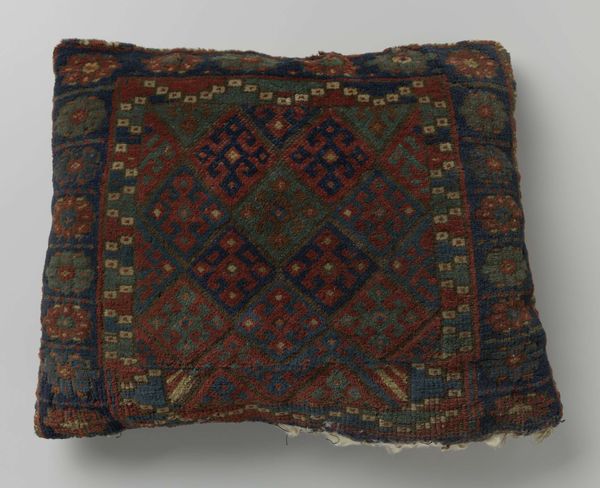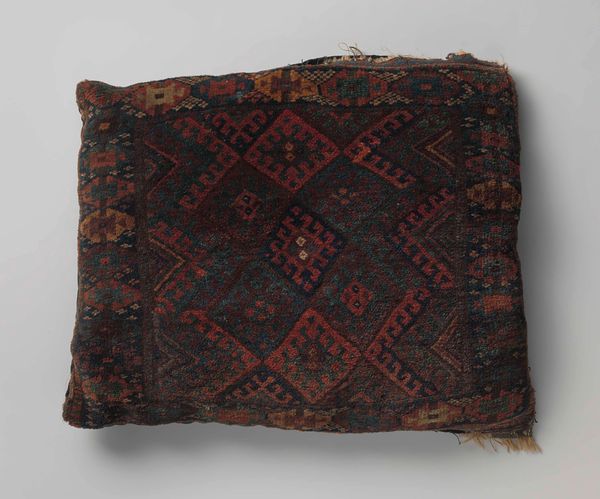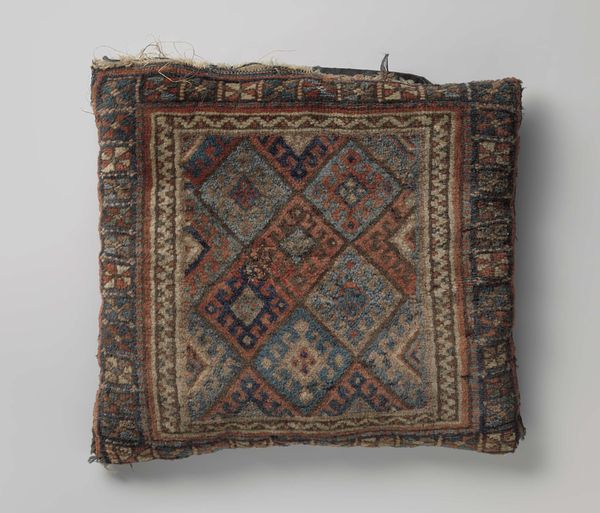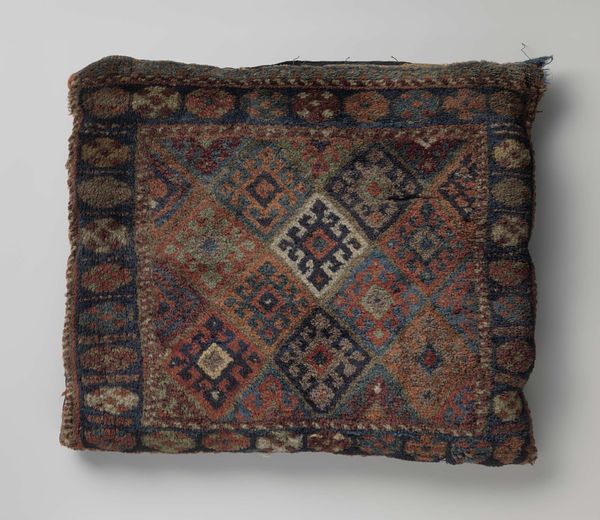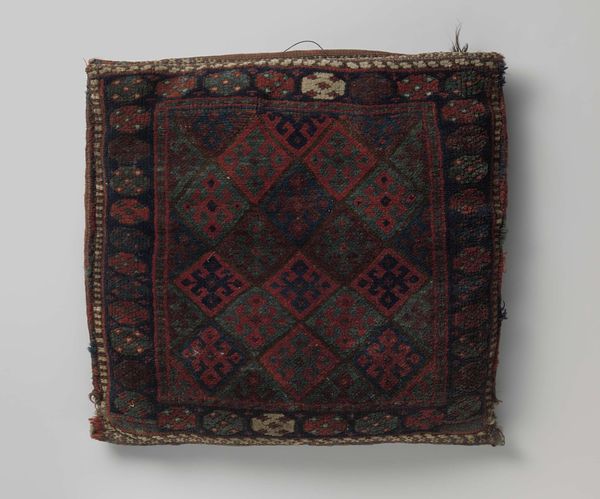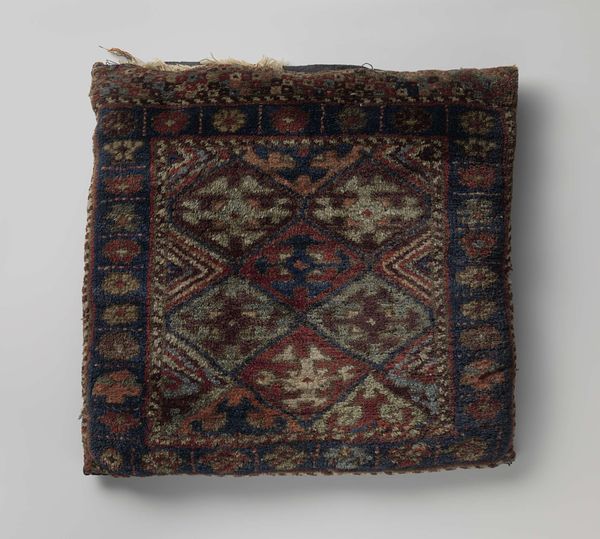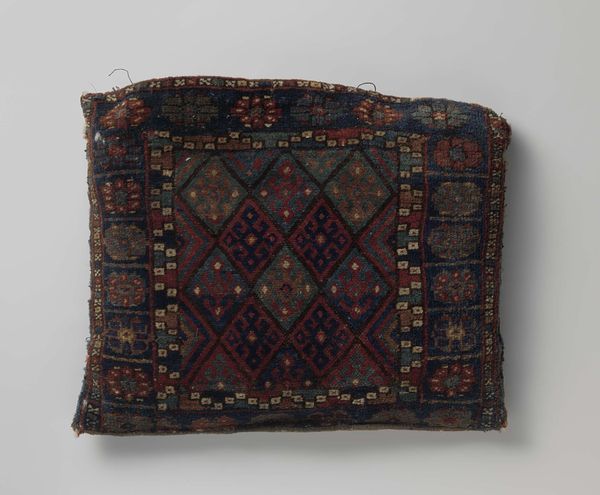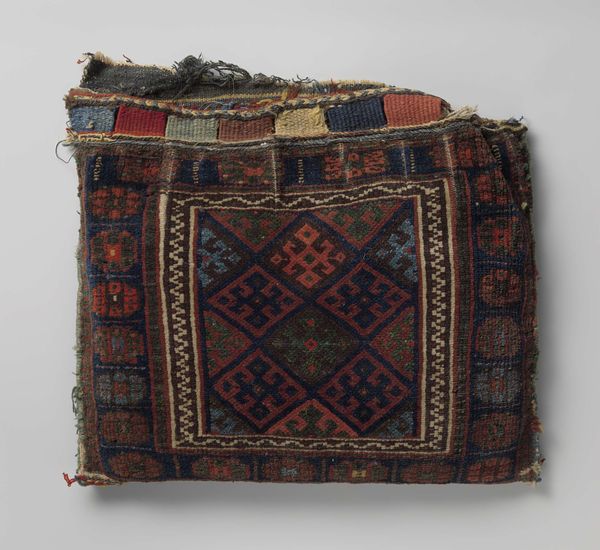
Kussen of tas met raster verdeeld in ruiten en kruisbloemen met haken. Achterkant vlak geweven in brede strepen. c. 1800 - 1900
0:00
0:00
fibre-art, weaving, textile
#
fibre-art
#
pattern
#
weaving
#
textile
#
hand-embroidered
#
geometric
#
orientalism
#
regular pattern
Dimensions: height 68 cm, width 49 cm, depth 9 cm
Copyright: Rijks Museum: Open Domain
Curator: This woven object, tentatively titled "Cushion or bag with grid divided into diamonds and cross flowers with hooks. Back plain woven in broad stripes," is attributed to the Jaffi people and dates to approximately 1800-1900. Editor: It looks incredibly tactile, almost rough to the touch, and surprisingly dense. The deep blues and muted reds give it an earthy, comforting feel despite the rather rigid geometric pattern. Curator: Indeed. The regularity of the pattern speaks volumes about the Jaffi’s textile traditions and perhaps, broader societal structures which valued precision. There's a sense of order imposed through the labor-intensive process of weaving. Editor: Precisely. Consider the materiality: The tight weave, the potential dyes used – possibly natural ones – this piece speaks of specific available resources and techniques. The distinction between something functional like a cushion or bag and “high art” just dissolves here. It’s skilled labor materialized. Curator: Yet the “Orientalist” style tag does give me pause. While accurately descriptive, the categorization may flatten complex cultural contexts under a Western-centric lens. I think we must be conscious how museums create narrative and value through their framing. Editor: Good point. The framing determines access to interpretation; considering where it was produced and how the materials shaped the possibility of making becomes important, too. What specific dyestuffs where available to achieve such hues, and how the availability influenced patterns over time... Curator: These material considerations combined with the piece's potential usage in domestic or ritualistic setting give rich ground for a fuller, people-centered art history, doesn't it? Editor: Absolutely! It forces us to see the connections – the textile, the weaver, and us, as interpreters bound to material reality. Curator: I concur. It leaves you wondering about the human touch that gave rise to something we engage with centuries later within this space. Editor: Precisely, each piece becomes an embodiment of the social relationships within it during its creation.
Comments
No comments
Be the first to comment and join the conversation on the ultimate creative platform.
